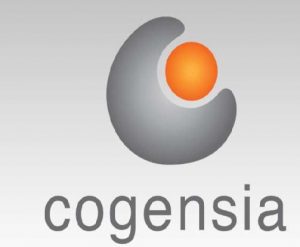O ne of the most common marketing tools used in the restaurant industries is an eClub. Customers are enticed to give their email address and birthdate in exchange for discounts and the predictable birthday treat (Isn’t it great receiving 30 different “free appetizer” offers at the same time each year??). But is your eClub really driving sales?
ne of the most common marketing tools used in the restaurant industries is an eClub. Customers are enticed to give their email address and birthdate in exchange for discounts and the predictable birthday treat (Isn’t it great receiving 30 different “free appetizer” offers at the same time each year??). But is your eClub really driving sales?
Here is a typical post-campaign meeting:
- Marketing Manager – How did the campaign perform?
- Digital – We sent 500,000 emails, had an open rate of 16%, which is lower than normal, but our click-through was 8%, which is up from last month.
- Analytics – We had only 317 transactions with that promo code, so it didn’t work out so well.
- Digital – Our servers know that’s the same promo as our national ad promo, so they use the national ad promo code on the POS terminal because it’s easier and they don’t need to think about it.
- Analytics – Well, we need to know how many people who received the email used any promotion code.
- Digital – I’m not sure how to get you that info. Can’t you just count everyone who used the code?
- Analytics – That will overstate results. We also didn’t account for normal activity, so I can’t give you any information on the incremental impact.
- Marketing Manager – So… how did the campaign perform?
Read More: The Data & Measurement Behind Successful Influencer Marketing
Measurement is challenging because of the technical and human forces at work. The conversation above highlights three key shortcomings that are common in retail and restaurant marketing measurement:
-
Promo code redemptions do not necessarily equal impact
A redemption is just that — someone who received your email showed it to the server who entered it (or something like it) into the system. Most consumers who redeem coupons are already active with your brand. There is no concrete evidence that a redemption is at all incremental.
One way to account for this is to develop a model impact by looking at same-store sales and tracking daily redemptions. Over time, this allows you to understand (and use as a rule of thumb) what the impact of a promotion is.
-
The server’s job is to get through the transaction quickly
They will take shortcuts because, well, they are shortcuts. This is challenging when marketing needs to have minor alterations to the process for measurement purposes.
Read More: Eight Psychological Pricing Techniques to Test on Your E-Commerce Store
-
Most restaurants do not have the technology required to match transactions to their eClub or mobile app
Therefore, there is no way to link the actual dollars that are received from people that received an email. So what does a marketer do? Well, the first thing to think about is what happens in the absence of marketing. What activity would your customers have if you didn’t market at all? Controlling for this can be tricky. Can you email only customers in certain markets? If so, you can track same-store sales before and after the promotion for the stores in the marketed group versus the stores in the control group. This will be noticeable if you do have a relatively large eClub (or loyalty program, or mobile program — whatever tactic you would like to measure). This will tell you the sales impact.
Read More: Five Strategies to Boost Donor Retention Using Email Marketing
The second thing to consider is expanding your eClub to include behavioral data. If you are fortunate enough to have track 1 data in your POS, you can append behavioral data to your eClub. You most likely can’t do this yourself, since this also requires external data, but you can have it done on a regular basis. The insights this will bring you more than offset the cost of this data.
With this behavioral data, you can observe, at an individual level, whether they responded to a promotion or not. Now, it’s easy enough to select a control group randomly from an upcoming promotion, DO NOT CONTACT them, and see what their behaviors are. This will give you an extremely valuable and honest assessment of the impact of your marketing. Suppose 16% of your eClub customers, who received a promotion, made a purchase. In the control group, it could be, say, 12%. The incremental performance, of the promotion, is 4%. However, the promotion most likely offered a discount to the portion of the 16% who used the promotion, whereas the 12% didn’t receive the discount. It is critically important to add sales, discounts, and margin to the analysis to truly understand the impact of your campaign.
While accurately measuring campaign performance is not easy, and probably requires changes to how you do it today, knowing what is working, who it is working with, and what your ROI is for your efforts will set you apart within your organization. When you can confidently answer the question, “How is our marketing performing?” the next time you are asked, you will position yourself and your organization for great success!
Read More: Five Strategies to Boost Donor Retention Using Email Marketing











